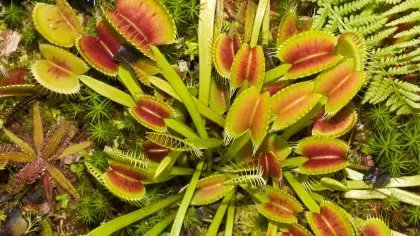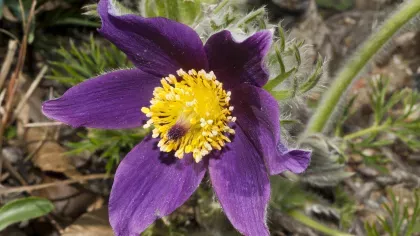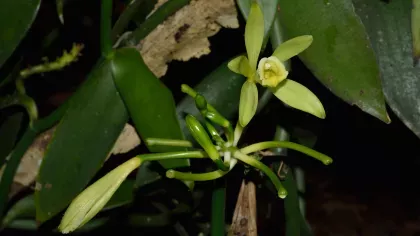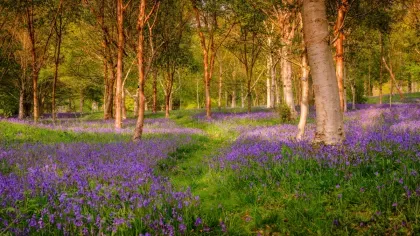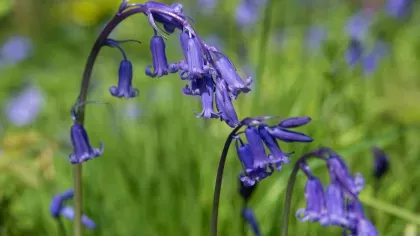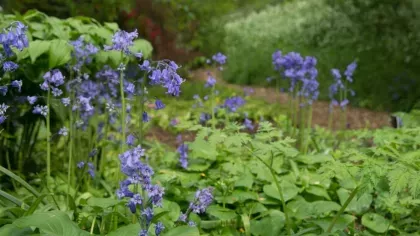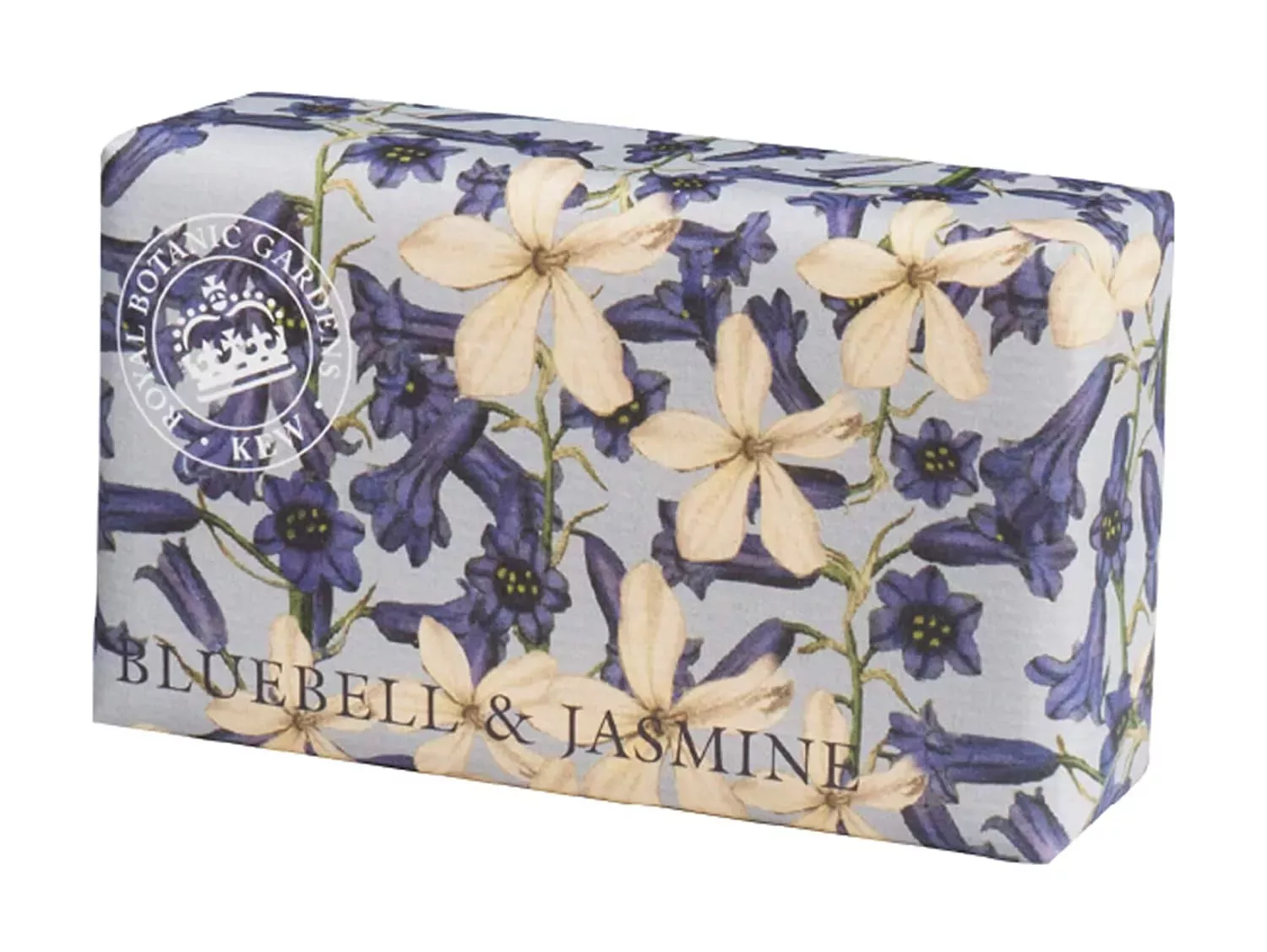
Bluebell
On this page
Bluebells bursting into bloom are a sure sign of spring.
Come April and May, they offer a chance to experience nature on an immersive scale by carpeting woodland floors at Kew and Wakehurst with nodding heads of indigo-blue flowers.
With magnificent bluebell woods, come beautiful bees and butterflies that love to feed on their rich nectar.
Bees can steal the nectar from bluebells by biting a hole in the bottom of the flower to reach the nectar without pollinating the flower.
Plant description
The bluebell is a herb that grows from a bulb. It has linear leaves and a flowering stem that grows up to 50 cm tall and droops to one side. The sweet-scented, nodding heads of flowers are bell-shaped and can be violet-blue and sometimes white or pastel pink.
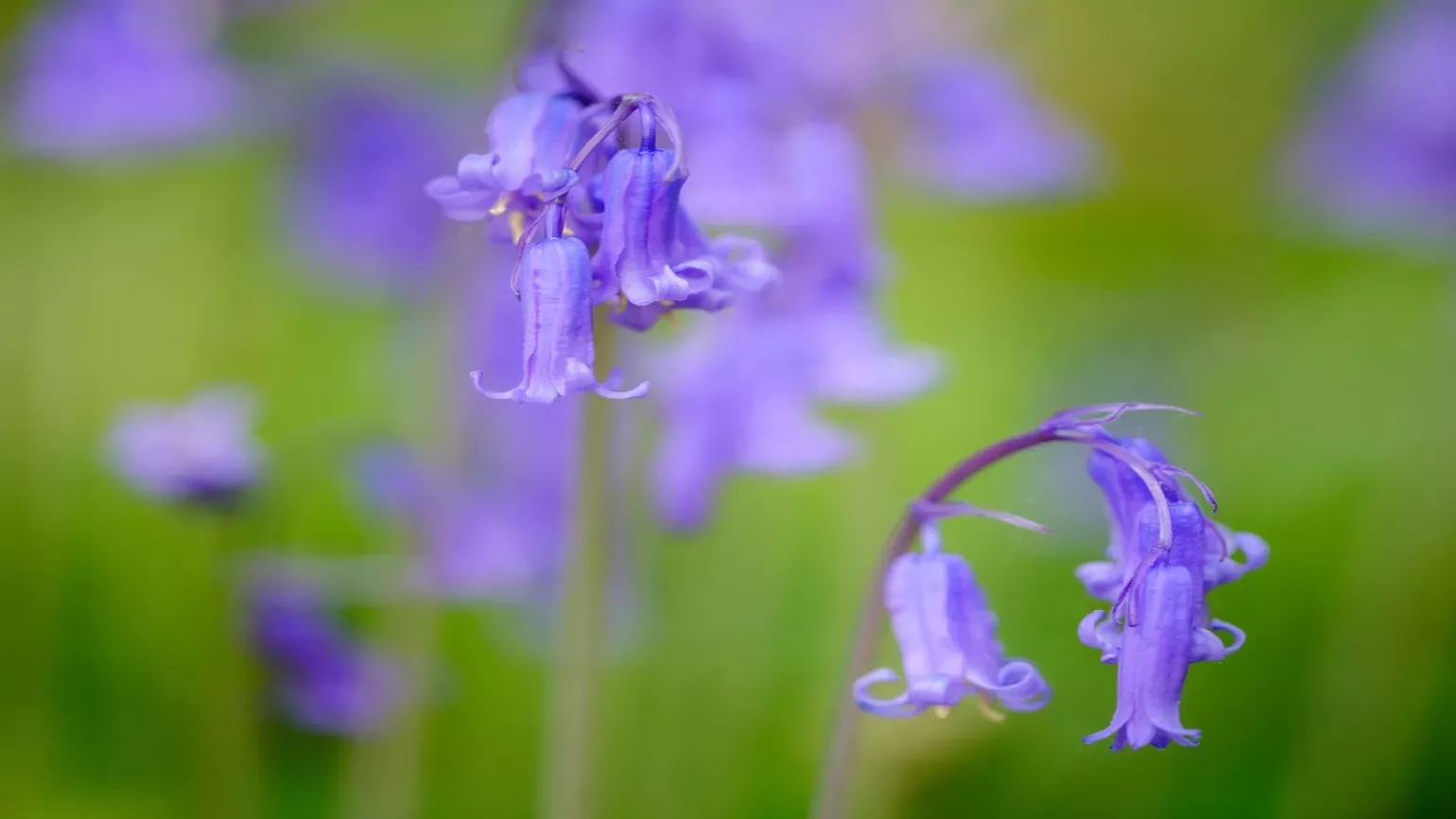
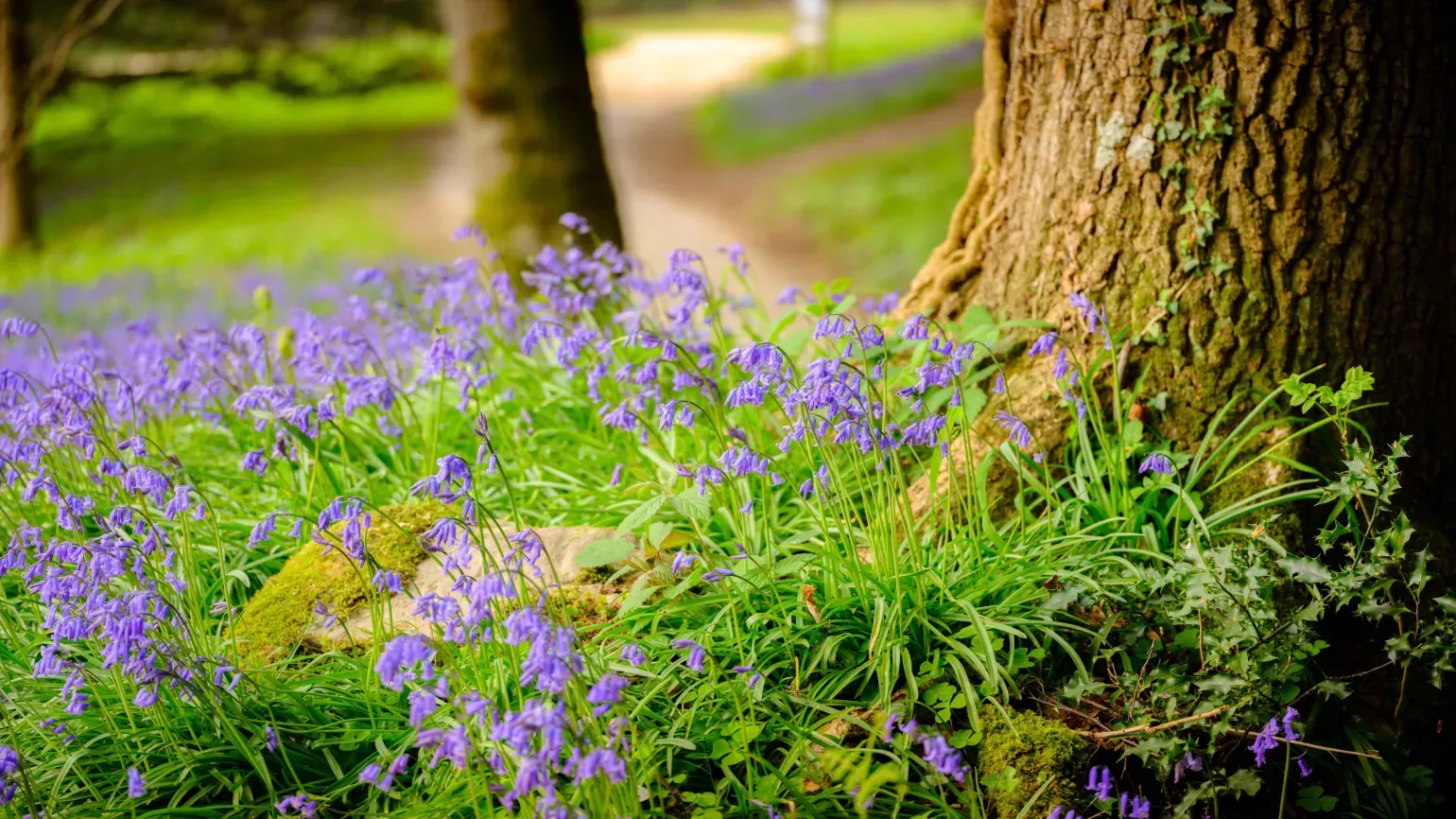
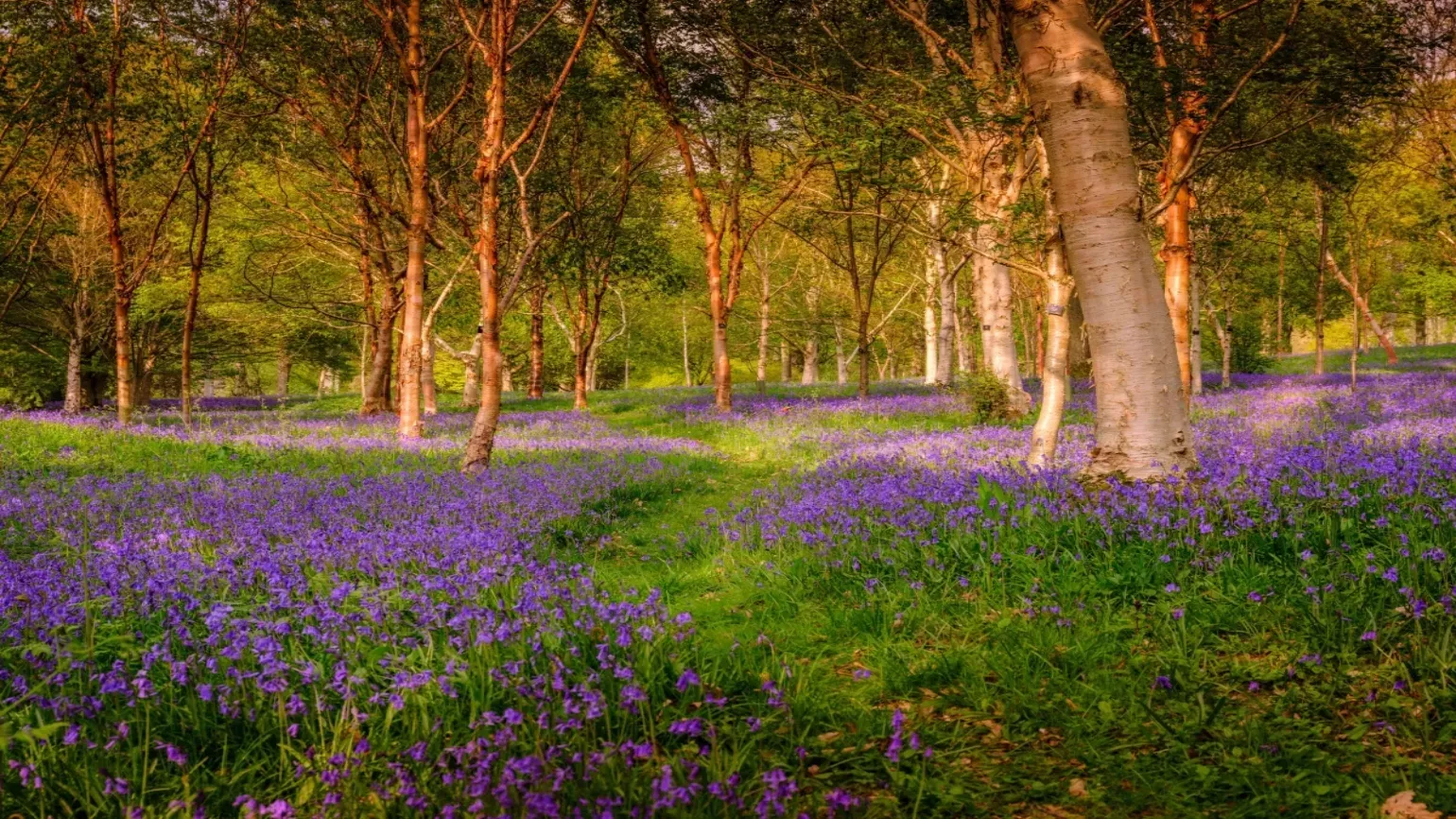
Plant uses
Beauty and cosmetics
Bluebell-inspired scents are added to soaps and hand creams.
Cultural
Bluebells make stunning ornamental displays in woodland or semi-shaded gardens, among trees or in herbaceous borders.
Health
The bulb of bluebells has been used in traditional medicine as a diuretic (increases urination) or styptic (stops bleeding).
Bluebells are not used in modern medicine due to their toxicity; they contain glycosides that are poisonous, and their sap can cause contact dermatitis.
Materials and fuels
The sap from bluebells can be used as an adhesive. It was traditionally used to bind pages into the spines of books and during the Bronze Age it helped stick feathers onto arrows.
Bluebell bulbs were crushed to provide starch for the ruffs of Elizabethan collars and sleeves.
Did you know?
Over half the world's population of bluebells grow in the UK.
Bluebells are commonly found in British woodlands that are over 400 years old, so they are often used to identify ancient woodlands.
The Natural Area at Kew is home to one of London's finest bluebell woods, part of which is over 300 years old.
At Wakehurst there are millions of bluebell bulbs scattered throughout our temperate woodlands and amongst our garden beds, making it a tourist hotspot in springtime.
Where in the world?

Bluebells grow in broadleaved, deciduous woodland, along hedgerows, and in fields and semi-shaded areas. They like moist, well-drained, and undisturbed soil that is slightly acidic and rich in humus. Bluebells need plenty of light in early spring when they are in growth, but cool shade in the summer.
Find it in our gardens
Kew Gardens
A botanic garden in southwest London with the world’s most diverse living plant collection.
Location
Natural area surrounding Queen Charlotte’s Cottage
View map of Kew GardensBest time to see
Wakehurst
Kew’s wild botanic garden in Sussex that has over 500 acres of plants from around the world and is home to the Millennium Seed Bank.
Location
Bethlehem Wood, Horsebridge Wood, Westwood Valley and Loder Valley Nature Reserve
View map of WakehurstBest time to see
Our work
In the UK, native bluebells are protected under the Wildlife and Countryside Act (1981) which prohibits anyone from picking or destroying the flowers, digging up the bulbs, or collecting bluebells from the wild for sale.
Although not classified as endangered, bluebells are under threat from the illegal collection of their bulbs and loss of their ancient woodland habitat.
There is also some concern that non-native bluebells that have escaped from cultivation, particularly Spanish bluebells (Hyacinthoides hispanica), may interbreed with native bluebells and threaten future populations.
Whilst native bluebells have scented flowers that appear on one side of their flowering stem, the invasive Spanish bluebell has flowers on both sides of the stem that have no scent, and it tends to be a more robust, upright plant.
Occasionally, patches of Spanish bluebells appear in our gardens and are weeded out by our horticulturalists.
Our scientists also DNA-tested the bluebell seeds collected from Wakehurst and stored at Kew’s Millennium Seed Bank to confirm they are native so that we can preserve our botanical heritage.
We have also been recording the first flowering dates of plants in our gardens each year for over 50 years.
Investigating the link between weather and flowering times can help track the effects of climate change on plants which in the longer term will have profound impacts on human life too.
The date that bluebells start to bloom can vary by several weeks from year to year depending on the severity of the preceding winter.
The mild winter of 2019/2020 meant that the weather wasn’t cold enough to keep the bluebell bulbs underground, so they gradually started springing up across the gardens early in March.
